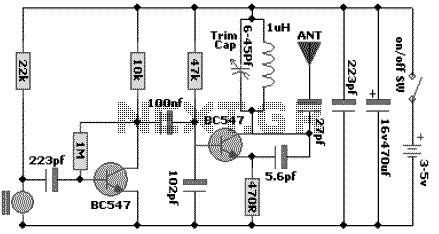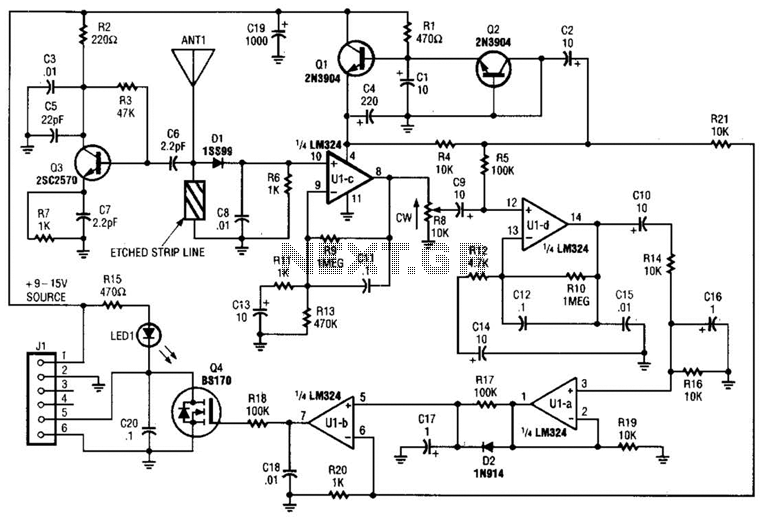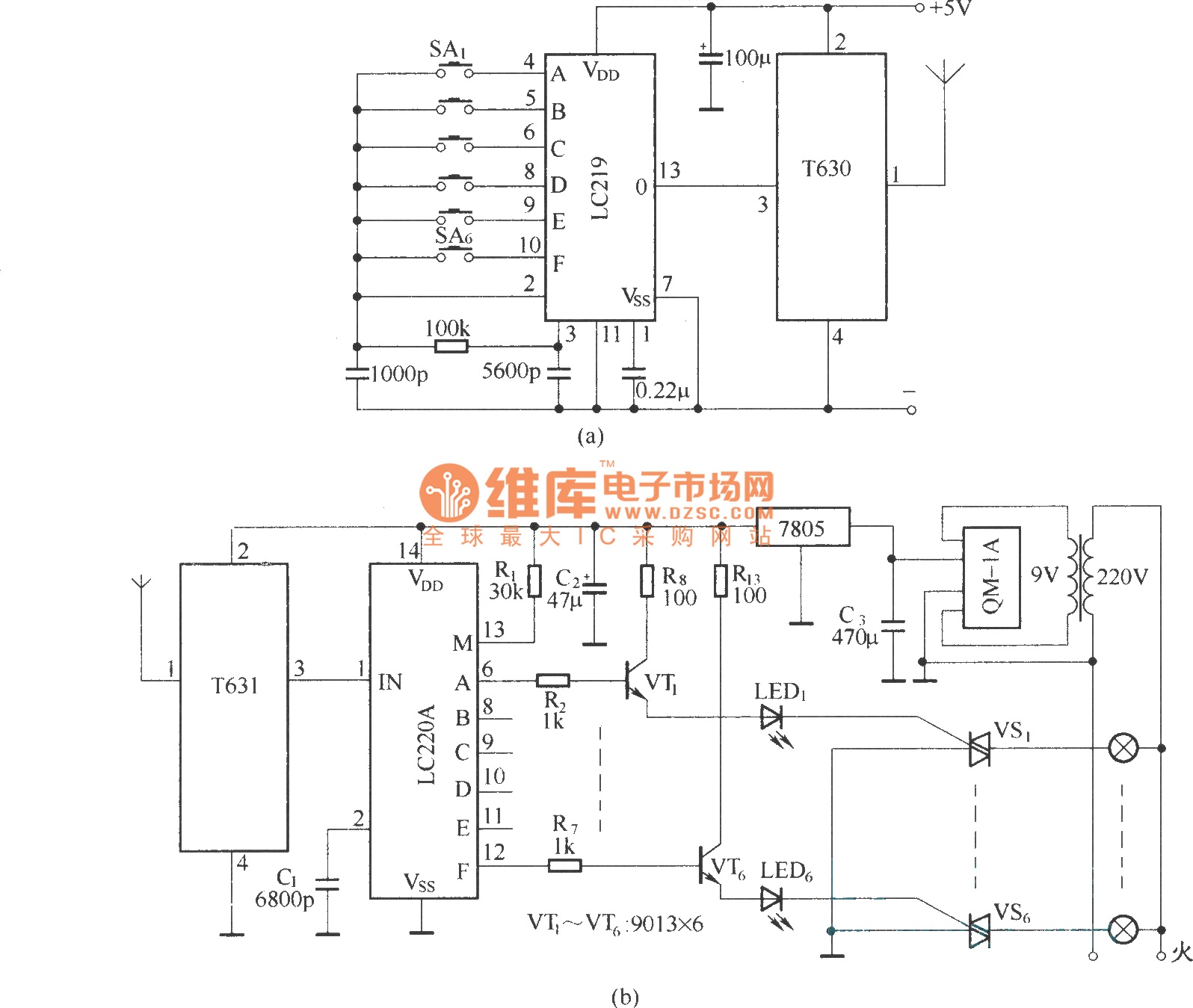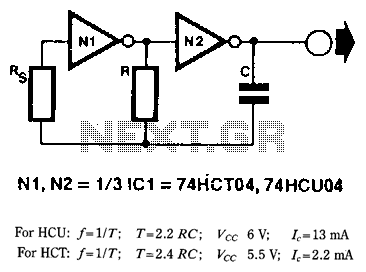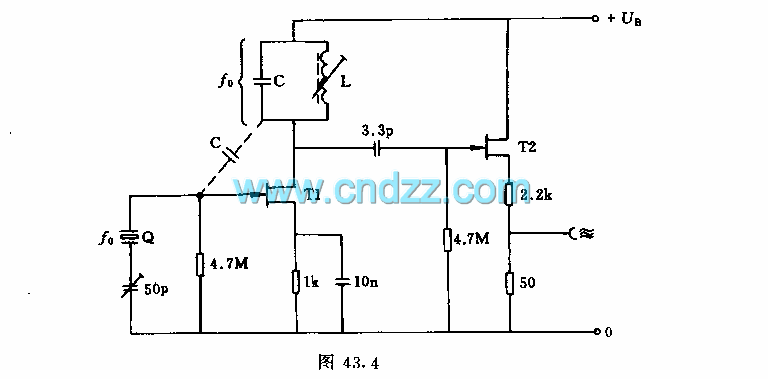
Adjustable Sine/Square Wave Oscillator
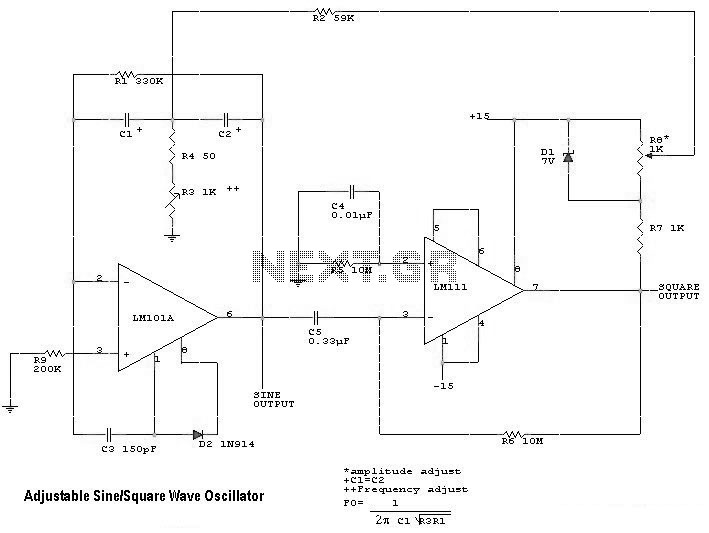
The following diagram illustrates the schematic of a simple, easily tuned adjustable sine and square wave oscillator. This circuit generates sine and square wave signals at frequencies ranging from below 20 Hz to above 20 kHz. The advantage of this circuit diagram is that it provides versatility in waveform generation.
The schematic features a configuration that allows for the generation of both sine and square wave outputs, making it suitable for a variety of applications, including audio signal generation, testing, and waveform analysis. The circuit typically employs operational amplifiers (op-amps) in conjunction with passive components such as resistors and capacitors to establish the desired frequency response and waveform shape.
In the sine wave generation section, a feedback loop is created using op-amps configured in an integrator and a Schmitt trigger. The integrator converts a square wave input into a sine wave output by integrating the square wave signal, while the Schmitt trigger ensures that the output maintains a clean, stable waveform by providing hysteresis. The frequency of oscillation can be adjusted by varying the values of the resistors and capacitors in the feedback loop, allowing for fine-tuning of the output frequency.
For the square wave output, the circuit can utilize the same op-amps, with the output from the Schmitt trigger providing a square wave signal directly. This dual functionality of generating both sine and square waves from a single circuit design enhances the utility of the oscillator.
The circuit is powered by a suitable DC power supply, ensuring that the op-amps operate within their specified voltage range. Proper bypassing capacitors should be included to filter out any power supply noise that may affect the oscillator's performance. Additionally, output stages may be incorporated to buffer the signals and provide the necessary drive capability for external loads.
Overall, this adjustable sine and square wave oscillator schematic presents a flexible solution for generating various waveforms across a wide frequency range, making it an invaluable tool for electronic experimentation and development.The following diagram is the schematic of simple easily tuned / adjustable sine and square wave oscillator. This circuit provides sine and square wave at frequency of below 20Hz up to above 20KHz. The benefit of this circuit diagram is that.. 🔗 External reference
The schematic features a configuration that allows for the generation of both sine and square wave outputs, making it suitable for a variety of applications, including audio signal generation, testing, and waveform analysis. The circuit typically employs operational amplifiers (op-amps) in conjunction with passive components such as resistors and capacitors to establish the desired frequency response and waveform shape.
In the sine wave generation section, a feedback loop is created using op-amps configured in an integrator and a Schmitt trigger. The integrator converts a square wave input into a sine wave output by integrating the square wave signal, while the Schmitt trigger ensures that the output maintains a clean, stable waveform by providing hysteresis. The frequency of oscillation can be adjusted by varying the values of the resistors and capacitors in the feedback loop, allowing for fine-tuning of the output frequency.
For the square wave output, the circuit can utilize the same op-amps, with the output from the Schmitt trigger providing a square wave signal directly. This dual functionality of generating both sine and square waves from a single circuit design enhances the utility of the oscillator.
The circuit is powered by a suitable DC power supply, ensuring that the op-amps operate within their specified voltage range. Proper bypassing capacitors should be included to filter out any power supply noise that may affect the oscillator's performance. Additionally, output stages may be incorporated to buffer the signals and provide the necessary drive capability for external loads.
Overall, this adjustable sine and square wave oscillator schematic presents a flexible solution for generating various waveforms across a wide frequency range, making it an invaluable tool for electronic experimentation and development.The following diagram is the schematic of simple easily tuned / adjustable sine and square wave oscillator. This circuit provides sine and square wave at frequency of below 20Hz up to above 20KHz. The benefit of this circuit diagram is that.. 🔗 External reference
